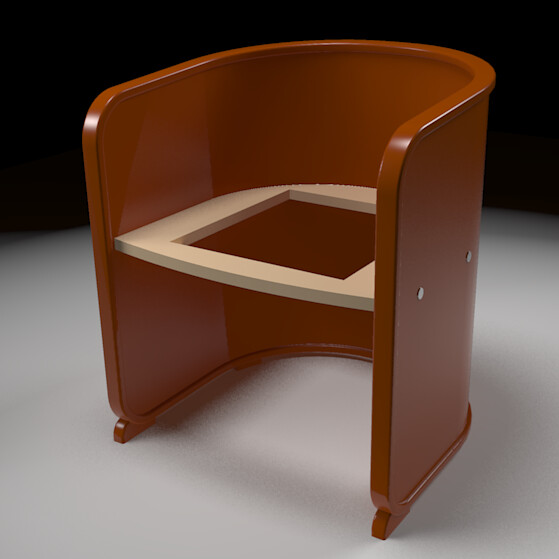Reflect/mirror details at both ends of symmetrical parts
-
A lot of model detailing involves working on ends of parts creating joints, and the parts are symmetrical, the joint detailing mirrored at the other end.
Table stretchers and timberframe parts are prime examples.
So how do you set up the components when building, so that when you go in to do the joinery, you only have to do the work on the one end?
-
Are you talking about building in the shop or in SketchUp? I've often thought it would be nice to be able to do something to one piece of wood in the shop and have it done to another at the same time. Of course there are some things that you can gang cut but that's not quite the same.
In SketchUp, you can draw just have of the part, copy it and flip the copy end for end. Then reassemble it and delete the seam line. You could also make a component of half the part, copy and flip the copy and hide the seam line. That works fine for appearances but it means that a cutlist would be inaccurate. Decide on what is important to you and follow the route that makes the most sense. For most things like tenons on rails, the tenons aren't very complex so I prefer to draw one on each end and most of the time I don't want the parts to show as half in the cutlist.
Here's an example in which the left and right halves are instances of the same components with the seamline hidden. I only drew half the plywood "barrel" and the edging around it. The seat frame parts are not split, though.

-
See this YouTube video, Dave, and explain what Mike has done at about the 2:20 mark to make the component auto-mirror at the opposite end of the beam.
-
He's made the tenon as a separate component placed on the end of the beam. He uses Edit>Cut to cut the tenon component to the clipboard. Then he opens the beam component and uses Edit>Paste in Place to place the component inside the beam component. This works from an appearance standpoint however be aware, if you are planning a cutlist from the model, the tenon(s) is the lowest level component and the beam itself won't show up in the cutlist at all. If you used that method on an apron that is 3/4" thick by 3" wide and put a 1" long tenon in as a component at each end, the cutlist would show you the two tenons as 3/4" x 1" x 3" but the apron itself wouldn't be there.
It's an interesting technique he's showing there. It allows him to have a tenon component already made that he can drop in where ever he needs it. If he explodes the tenon components at some point, the beams will be reported with the correct length. His timber framing works with a limited number of beam cross section sizes so this method by be useful to him. For the kind of furniture I'm drawing there isn't any improvement to the work flow because I'd have to have a gazillion different tenon components and I'd have to do a lot more work to make the model useful for creating the plans I do.
You can give it a try and see if you like it, though.
I watched his video again and while it illustrates the Cut and Edit>Paste in place steps well, I can't see a benefit from the point of view of just drawing tenons. I think it would be faster to just draw the tenon in place on the end of the beam with the component open for editing. Or, if you didn't want to risk screwing up the geometry of the beam, draw the tenon outside the component, then cut and paste in place. I can't think of any cases where I would want the joinery to be in a separate context from the rest of the "board".
I do find Edit>Paste in place to be one of the tools I use frequently, though. I use it often enough that I have a keyboard shortcut established for it.
-
A key question is whether you are finished drawing one end and just need symmetry at the other end, or if you intend to continue editing the first end and expect the other end to mirror it.
For the former, you can simply select the relevant Edges and Faces at the first end, move a copy to the other end, flip it, and drop it in place. Often you will need to clean up a stray Edge or two or repair a Face if you do it that way, but it is fast and easy.
For the latter, though, you need to do something like Dave describes because you need both ends to be instances of the same ComponentDefinition, just flipped. But you will have to explode the board and the ends and then recreate the board as a single component when you are done else you will get the kinds of cut list issues he describes.
Steve
Advertisement







